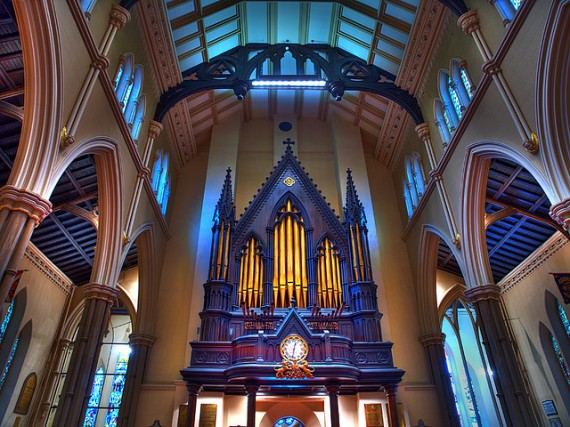How Important Is Art To The Mission Of The Church?
I’ll be the first to admit, I love art. I also love the church.
For a long time, these worlds have been at odds. Some pastors embrace the arts. Others fear it.
Some artists embrace the church. Others hate it with a passion.
Can these two worlds be reconciled? Should they be?

If you’re a creative, I’m sure you’ve wondered if your arts fits within the four walls of the church.
If you’re a pastor, you’ve probably asked the same question regarding the artists in your congregation.
We’re going to explore two views today. Then, I want to hear your take in the comments.
Matter of fact, you should tweet this post to your followers so they can discuss as well.
Ready? This is going to get good…
View #1: Art Is Beautiful, but not Essential
I’ve been having many conversations surrounding this idea recently.
If the office of an “artist” was so essential to the mission of the church, why didn’t Jesus add it to the list of apostle, prophet, evangelist, pastor, and teacher?
Why isn’t there a separate category for the artist?
The New Testament is about people. It’s about discipleship.
Art, by itself, does not equip people to do ministry, which is the main purpose of the church.
So while art it beautiful, it simply can’t be an end in itself.
View #2: Art Is An Essential Part of God’s Purpose and Plan
On the other side are those in favor of the arts. Often I hear phrases like this:
- Why does the devil have to have all the good music?
- The church should be at the forefront of creativity
- Since God is a creative being and we’re made in His image, we’re made to create.
There’s something beautiful about art. It’s completely human, yet it reveals the mystery of the Gospel in unique ways.
Arts captures attention. It invites people into a story.
While artist may not have been included as one of the fivefold ministry gifts, artists can function as an apostle, prophet, evangelist, pastor, or teacher.
It could even be argued that this generation can only be reached through the arts.
Without art, our ministry wouldn’t engage culture. We’d sit in our church buildings, clench our theology and watch as the world passes us by.
Where Are You?
I don’t think anyone would say that art isn’t important – that it has no place.
But how important is it to the mission of the church? I know art has a significant place in the Old Testament, but where do you see it in the New?
I need your feedback. How important is art to the mission of the church? You can leave a comment by clicking here.
I would love to hear some feedback from other creatives and pastors that you know. If you think this discussion is necessary and helpful, please share the post via the social network icons below. Thank you so much!
Comments
Trackbacks
- […] http://www.davidsantistevan.com/2012/03/art-and-the-church/ This entry was posted in Creativity, Worship Leading and tagged Easter, lighting, magnify, production, projection, video, worship by Caleb Delamont. Bookmark the permalink. […]
This is why when I see people who are seriously gifted in the arts, I sing a little song of thankfulness and maybe even do a little happy dance.
A film or videogame that is fictional and communicates some aspect of how the Kingdom of God works in the world in a way that requires a deep understanding to fully grasp, yet draws people in with its intrigue or unexpected nature.
To God AT Play, be thankful there is enough of a market to support some art. (I do not believe in uncontrolled capitalism, but it is a very! important ingredient in a very delicate balancing act). With 7 billion people in the world now, 6 billion would change places with us in a heart beat. How much art can we create living in 3rd world poverty. But, to whom much is given , much is required.Which now ties in. Art can make us aware through second hand experience that so much of the world is dying in poverty with out Christ. Words alone usually don’t move us. But art in its various forms can. We talk a lot about worship nowadays, we are called to worship our Creator. But, the Church was “commanded” to go into all the world. Are we doing that, or is our art a distraction. (Another balancing act).
In studying history, we often come to the conclusion that something omitted meant that it was universally important and understood. We can ask, is food and water important to the mission of the Church?
Back to God AT PLAY, about mystery. Deuteronomy 29:29 The secret things belong to the Lord our God,,, Mystery is part of being a Christian. You are also very correct to say that Christ met people where they were, and spoke to them using things in their world they could relate to. It won’t be long before those 7 billion people all have smart phones. The art and science capable of changing the world is now in your hands.
Some type of creativity is in all of us, God placed it there.
http://iparanastudio.blogspot.com.br/2017/06/the-duel-between-heaven-and-hell.html